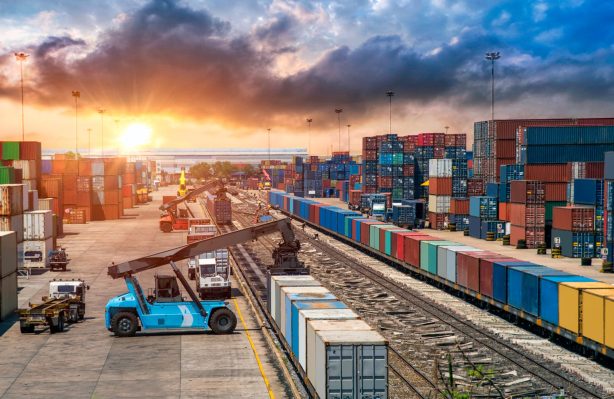Supply chain disruptions — triggered by factors including demand surges, high transportation costs and pandemic-related lockdowns — are expected to continue well into next year, experts predict. Companies are experiencing the brunt of the impact, with 36% of small businesses responding to a 2021 U.S. Census survey reporting that they’ve experienced delays with domestic suppliers. This has been costly. According to a 2020 Statista survey, 41% of executives in the automotive and transportation industry alone said their company lost $50 to $100 million due to supply chain issues, a figure which has likely climbed higher since.
There’s no easy fix, but an emerging cohort of startups is pitching software as a way to potentially anticipate — and respond to — market shocks. One, Tive, provides supply chain visibility insights that ostensibly help companies manage their in-transit shipments’ location and condition. Tive today announced that it raised $54 million in a Series B financing round led by AXA Venture Partners with participation from Sorenson Capital, Qualcomm Ventures, Fifth Wall, SJF Ventures and Floating Point Ventures, which CEO Krenar Komoni attributes to the company’s growth over the past year.
“[Our annual recurring revenue is] $29 million and projected to $50 million before the end of the year,” Komoni told TechCrunch via email, adding that the latest investment values Tive at $300 million (post-money). He claims that the startup acquired more than 200 new customers in 2021, accelerating Tive’s plans to expand its workforce of 120 people to 300 by the end of 2022.
“The pandemic has brought the topic of supply chains to the forefront not just in the logistics departments, but also in company boardrooms and dinner tables across the globe,” Komoni added. “In order for companies to better prepare for supply chain challenges and [remain] competitive while making sure there is product availability on shelves, visibility into their inventory while in transit is critical.”
Tracking real-time shipments
Komoni asserts that visibility is an unsolved problem for many companies reliant on the global supply chain. (“Supply chain” can mean many things, but here, it refers to the network between businesses and their suppliers to manufacture, assemble and ship physical products to buyers.) Companies use visibility data to, among other things, prevent stock pile-ups in locations that don’t need inventory. But according to Komoni, most tracking is done manually via loose systems of emails, spreadsheets and phone calls.
A Statista poll taken before the pandemic found that supply chain executives believe visibility is the biggest challenge they face. Driving the point home, a 2017 survey by GEODIS, the transportation and logistics firm, showed that just 6% of companies feel they have complete visibility into their supply chains.
That’s led companies to boost spending on supply chain software in recent months. “[There is a] major timesuck and underutilization of the labor force that is begging for operating leverage, especially in this industry,” Komoni said.
Tive — which Komoni, a chip designer by trade, co-founded in 2015 — offers cloud-based software, sensors and services to track shipments as they progress through the supply chain. The company’s hardware can record location as well as metrics like temperature, humidity, shock and light exposure, while its software allows shippers to create profiles, set custom alerts and use an API to pull data into existing record-keeping systems.
“For the data decision-maker, [our technology] means that they finally have … data on where the company’s shipments are at any given time, and for the technical decision-maker, it means that they can easily access this data through our platform or APIs, or we can push it to various business intelligence tools that they might use on daily basis,” Komoni continued. “[We’re working] on creating seamless experiences with our … software offerings especially around collaboration between all the stakeholders in the supply chain.”
Toward differentiation
Currently, Tive’s customer base stands at 350 companies in industries including consumer packaged goods, logistics, produce and retail, Komoni says. Tive claims that one of the world’s largest logistics companies uses the platform to track pharmaceutical shipments across the globe.
But while investors are behind Tive, at least judging by the robustness of its Series B, there’s no shortage of competition. Last year saw $11.3 billion in venture funding for supply chain startups, including Sensitech, Emerson and Project44, which in June raised $202 million as part of an investment led by Goldman Sachs.
Going forward, Tive will have to prove its solution sets it apart from the rest of the pack. Komoni says that the company is taking steps to do so, for example by introducing a 5G-connected tracker designed for pharmaceutical shipments and pursuing “tech-related” mergers and acquisitions.
“[The latest investment] is primarily going to be used for land-grab and expansion opportunities,” Komoni said. “[It’ll] fuel Tive’s rapidly-growing international presence with the expansion of global sales and marketing initiatives. In addition, it’ll accelerate the development and introduction of next-generation solutions, services and bring actionable supply chain intelligence and 24/7 monitoring to the market.”
Existing investors RRE Ventures, Two Sigma Ventures, NextView Ventures, Hyperplane Ventures, Broom Ventures and Supply Chain Ventures also invested in Boston, Massachusetts-based Tive’s Series B. The company has raised $79 million to date.
